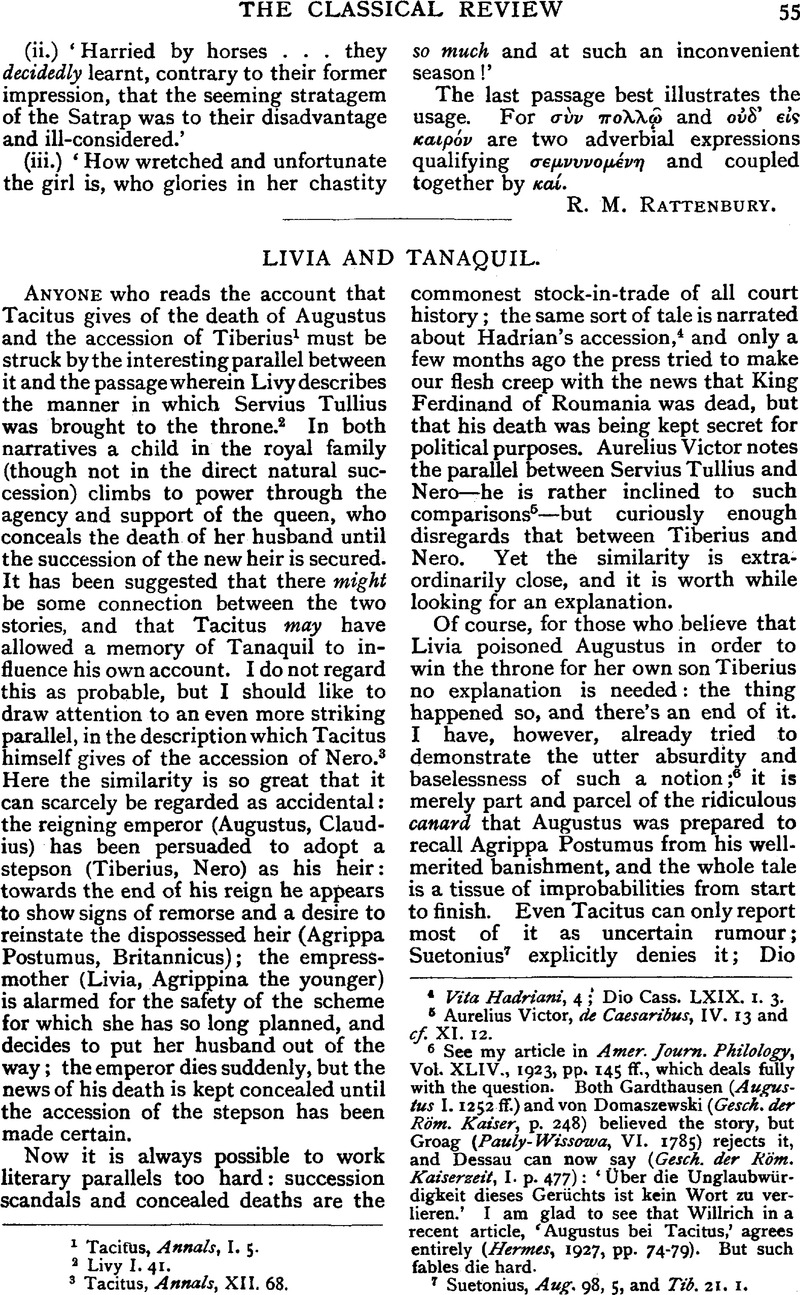Article contents
Livia and Tanaquil
Published online by Cambridge University Press: 27 October 2009
Abstract

- Type
- Review Article
- Information
- Copyright
- Copyright © The Classical Association 1927
References
page 55 note 1 Tacitus, Annals, I. 5.
page 55 note 2 Livy I. 41.
page 55 note 3 Tacitus, , Annals, XII. 68.Google Scholar
page 55 note 4 Vita Hadriani, 4; Dio Cass. LXIX. 1. 3.
page 55 note 5 Victor, Aurelius, de Caesaribus, IV. 13 and cf. XI. 12.Google Scholar
page 55 note 6 See my article in Amer. Journ. Philology, Vol. XLIV., 1923, pp. 145 ffGoogle Scholar., which deals fully with the question. Both Gardthausen (Augustus 1.1252 ff.) and von Domaszewski, (Gesch. der Röm. Kaiser, p. 248)Google Scholar believed the story, but Groag (Pauly-Wissowa, VI. 1785)Google Scholar rejects it, and Dessau can now say (Gesch. der Röm. Kaiserzeit, I. p. 477):Google Scholar ‘Über die Unglaubwürdigkeit dieses Gerüchts ist kein Wort zu verlieren.’ I am glad to see that Willrich in a recent article, ‘Augustus bei Tacitus,’ agrees entirely (Hermes, 1927, pp. 74–79).Google Scholar But such fables die hard.
page 55 note 7 Suetonius, , Aug. 98, 5, and Tib. 21. 1.Google Scholar
page 56 note 1 Dio Cass. LVI. 31.
Seneca, , de Matrimonio, fr. 79.Google Scholar
Plutarch, , Mulierum Virlutes, 24 3c and Aetia Romana, 36.Google Scholar
page 56 note 4 Ciaceri, ‘Claudio e Nerone nelle Storie di Plinio,’ pp. 387–434 of his Processi Politici.Google Scholar
page 56 note 5 The opening of the Agricola is a famous instance of his hatred.
page 56 note 6 For this portrait of Augustus, see the Annals I. 1–4 and 9–10, and cp. Haverfield's remarks in J.R.S. 11. p. 198; for the introduction of maiestas trials, see Annals I. 72; for Domitian's study of Tiberius' memoirs, see Suetonius, Domit. 20. Tacitus is practically alone in the portrait he draws of Livia.
page 57 note 1 I find that Willrich, in the article referred to above, also notes the similarity of phrase: he deals fully with Tacitus' portrait of Augustus.
- 2
- Cited by




